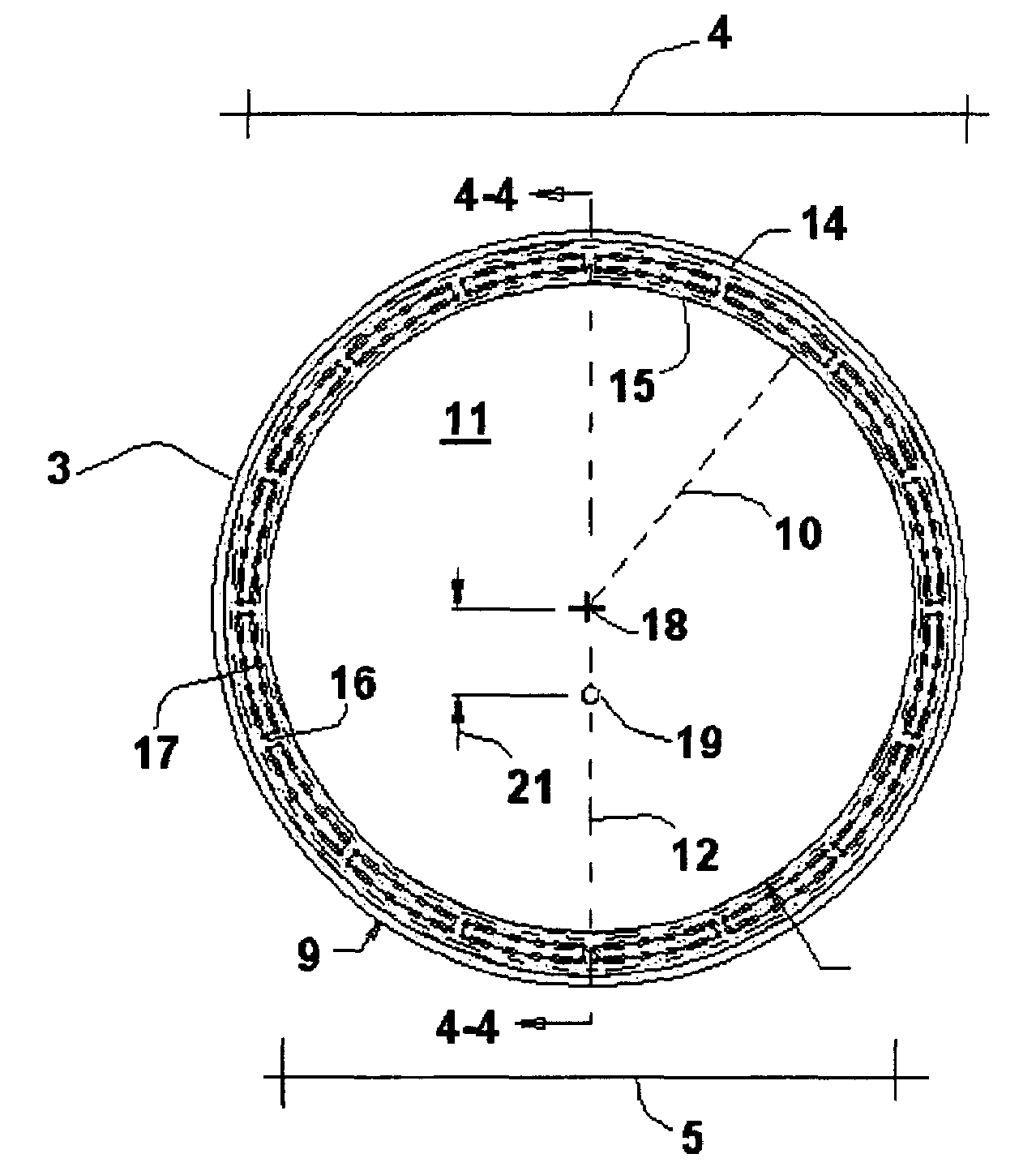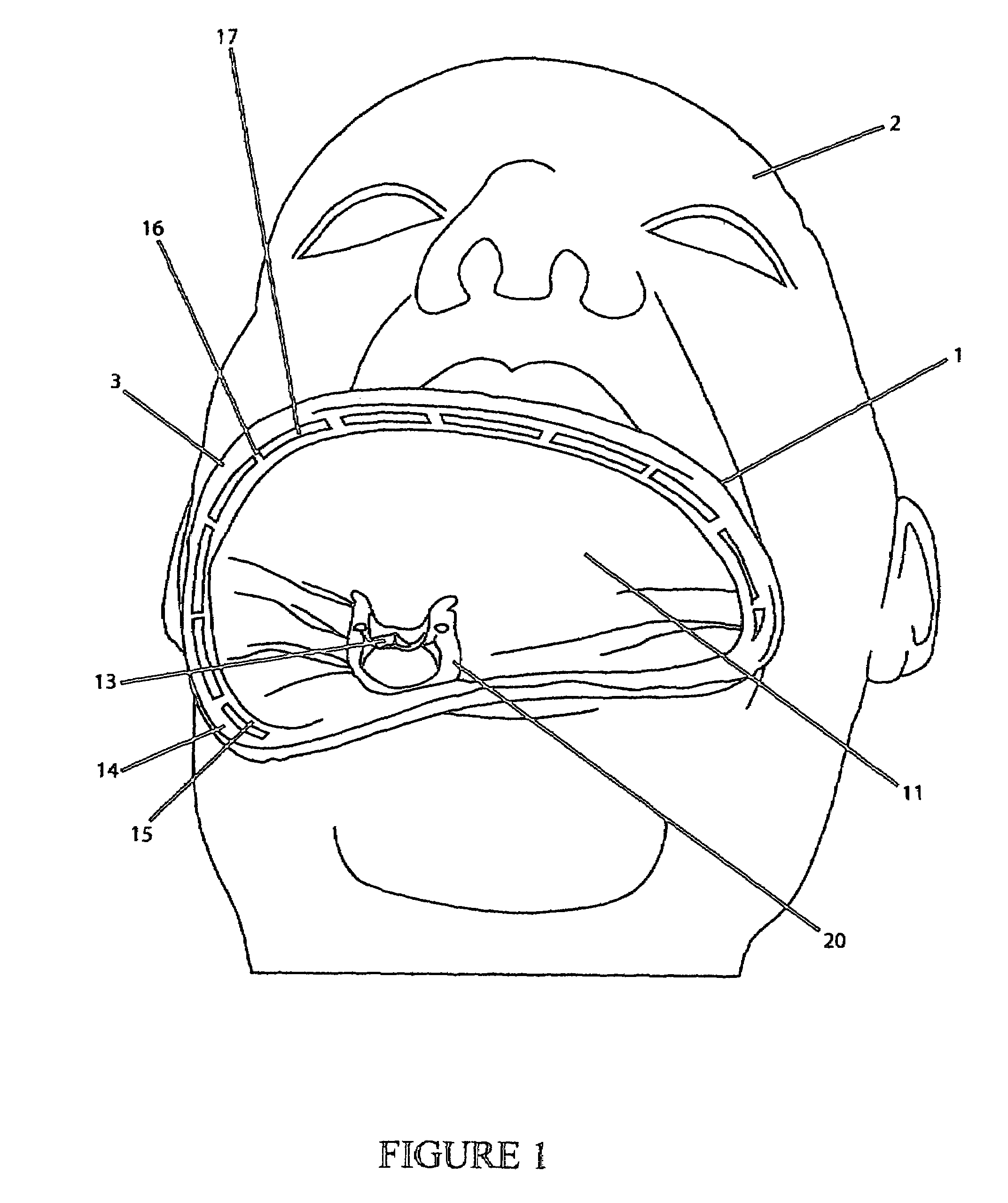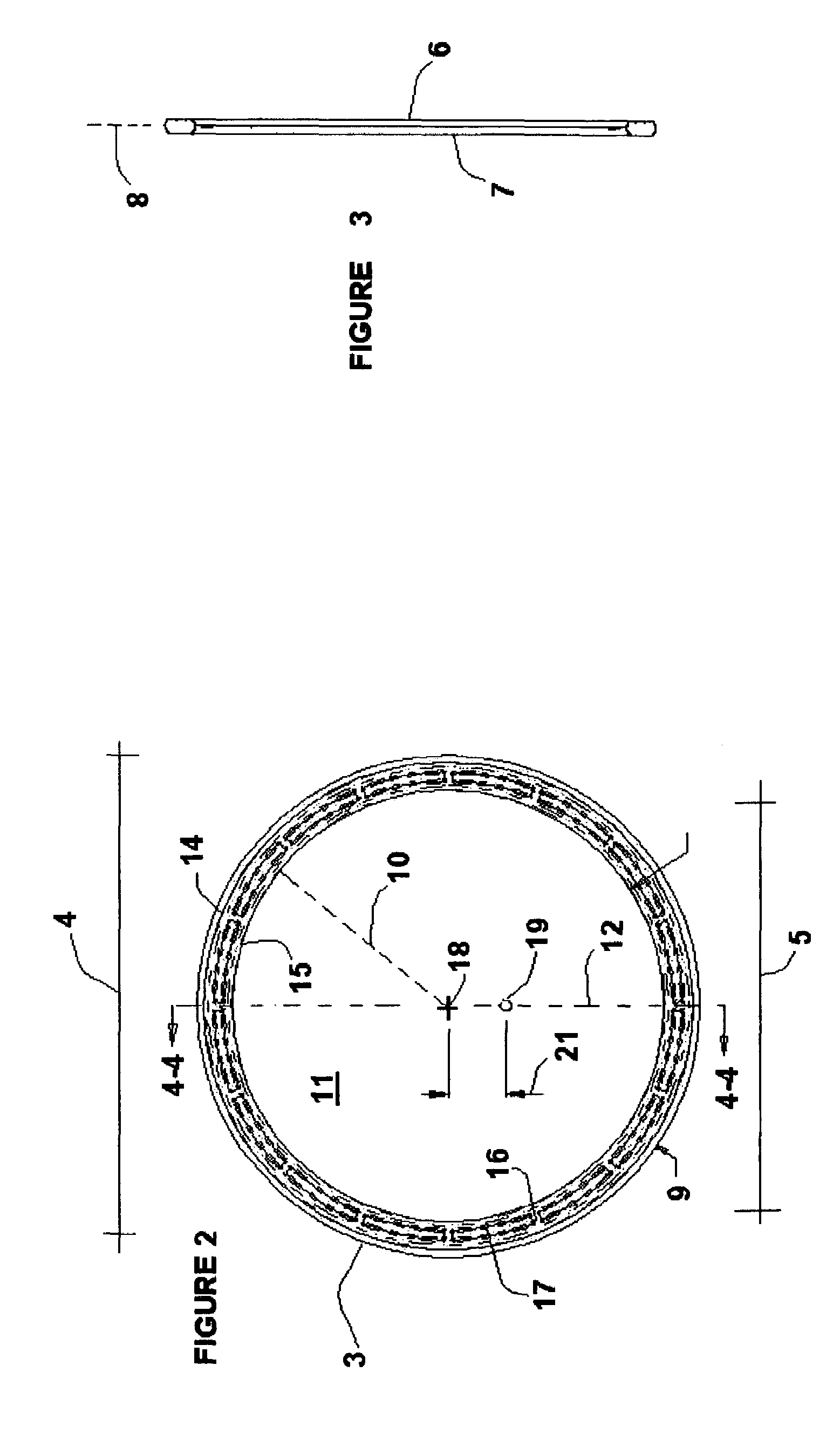Symmetrical rubber dam having a tooth gripping orifice
a rubber dam and orifice technology, applied in the field of rubber dams, can solve the problems of tearing of the dam membrane, affecting the stability of the dam, and complicated dam positioning process, and achieve the effect of simplifying the dam positioning process
- Summary
- Abstract
- Description
- Claims
- Application Information
AI Technical Summary
Benefits of technology
Problems solved by technology
Method used
Image
Examples
Embodiment Construction
[0014]Referring to FIG. 1, a rubber dam constructed according to the principles of the present invention is shown generally at 1, while being worn by a patient 2. The dam 1 includes a flexible molded plastic frame 3. Referring also to FIG. 2, the dam 1 has nominal outside diameter 4 of 4.25 inches and a nominal inside diameter 5 of 3.75 inches. As best seen in FIG. 3, the plastic frame 3 is formed of a first half 6 and a substantially identical second half 7. The frame 3 is formed from a lightweight plastic such as high density polyethylene or any lightweight material with sufficient rigidity to support membrane 11 while permitting repeated bending and reshaping of frame 3 by hand. In particular, the frame may be folded, bent or curved from the plane 8 in which it resides, repeatedly, to conform to the particular requirements of the dental procedure being performed as well as the contours of the face of patient 2. When bent, the material of frame 3 permits the frame to assume the ne...
PUM
 Login to View More
Login to View More Abstract
Description
Claims
Application Information
 Login to View More
Login to View More - R&D
- Intellectual Property
- Life Sciences
- Materials
- Tech Scout
- Unparalleled Data Quality
- Higher Quality Content
- 60% Fewer Hallucinations
Browse by: Latest US Patents, China's latest patents, Technical Efficacy Thesaurus, Application Domain, Technology Topic, Popular Technical Reports.
© 2025 PatSnap. All rights reserved.Legal|Privacy policy|Modern Slavery Act Transparency Statement|Sitemap|About US| Contact US: help@patsnap.com



